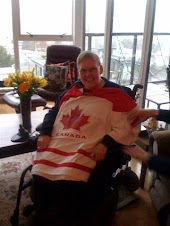More than 30,000 Americans have ALS, according to the ALS Association, a nonprofit organization that supports ALS research and public and patient education about the disease. Around 3,000 to 5,000 new cases of the disease are diagnosed every year.
Although ALS can strike at any age, it usually appears between the ages of 40 and 70. Men and women of all ethnic and racial groups are about equally affected.
The disease attacks the motor neurons, nerve cells in the brain and spinal cord that control the body's voluntary muscles. As the motor neurons begin to die, the muscles weaken and shrink. Early symptoms of ALS may include unusual fatigue and clumsiness, muscle weakness, slurred speech, and difficulty swallowing.
As the disease progresses, patients gradually lose the use of their hands, arms, legs, and neck muscles, ultimately becoming paralyzed. They can speak and swallow only with great difficulty. However, thinking ability, bladder and bowel function, sexual function, and the senses--sight, hearing, smell, taste, and touch--are unaffected.
About half of people with ALS die within three to five years of diagnosis. In rare cases, a person may survive with the disease for many years (see accompanying article). The usual cause of death is failure of the diaphragm muscles that control breathing. Some individuals with ALS choose to prolong their lives by using a ventilator, but prolonged use of a ventilator may increase the risk of death from an infection such as pneumonia.
No single test can diagnose ALS. Because of the slow onset of the disease, it can be difficult to diagnose in the early stages, said Jeffrey Rothstein, M.D., Ph.D., associate professor of neurology at Johns Hopkins University School of Medicine in Baltimore. Johns Hopkins is one of the nation's leading centers for ALS research.
"We do a number of tests to rule out other diseases that might mimic ALS. Because it's a fatal disease, you want to be absolutely certain of your diagnosis. The patient is generally about 20 to 50 percent into the disease by the time it is diagnosed," he said.
From Go Pro

View from my living room
Tuesday, October 7, 2008
Subscribe to:
Post Comments (Atom)
































































































































































1 comment:
This was very inciteful (I probably spelled that wrong), thank you for the information. It really helps me to understand a bit better.
Post a Comment